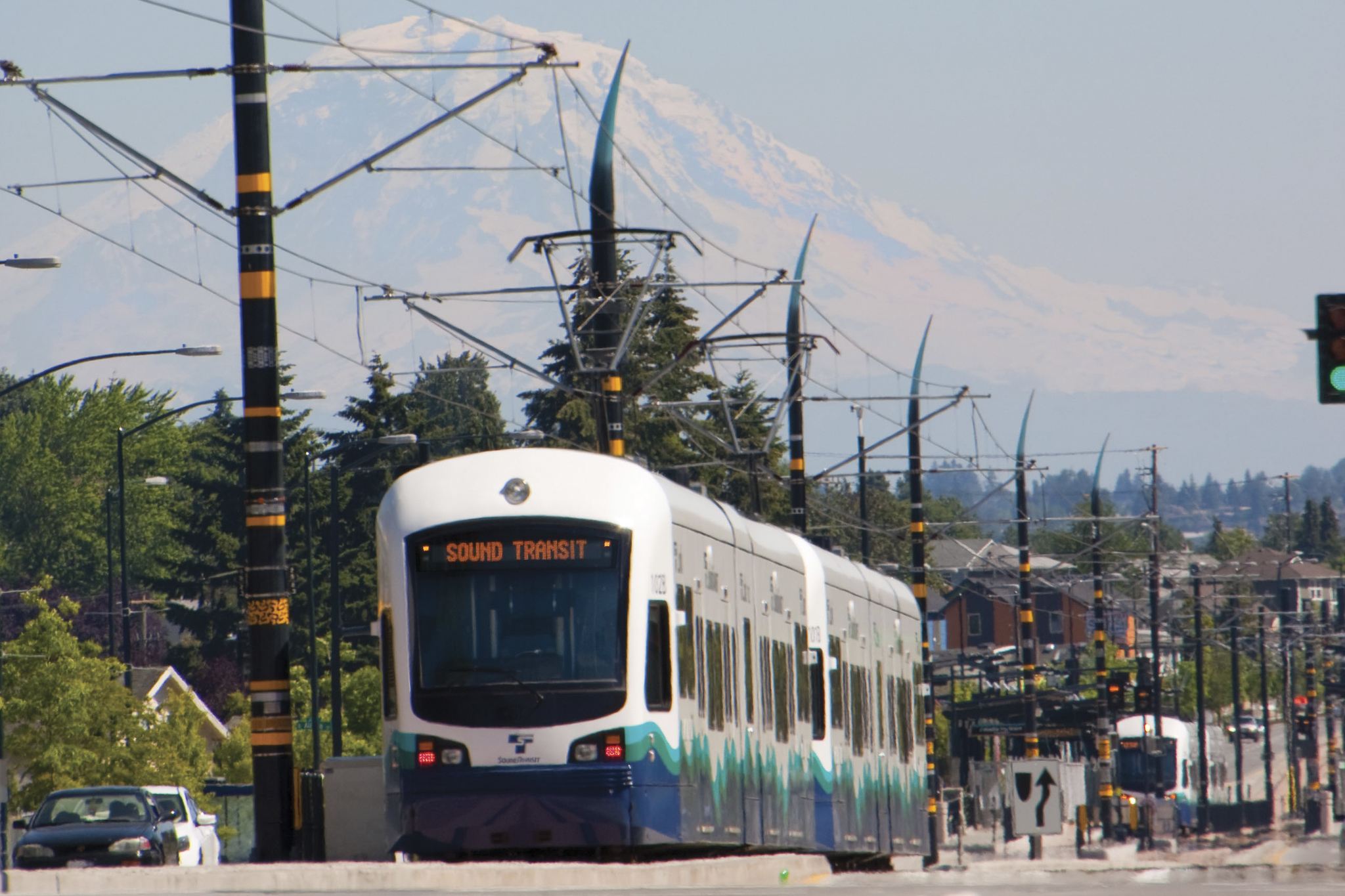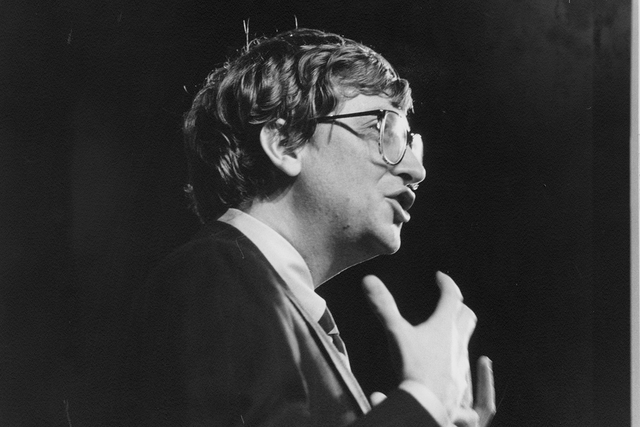SEEMS LIKE no good idea goes unpunished in these parts. Take the idea of letting private companies build needed bridges and highways that the public sector can’t afford to build, and then get their investment through tolls. Sweeten it with an environmental boon: Since tolls on any new highway will likely be collected electronically, at cruising speed, via dashboard transponders rather than archaic tollbooths, you can adjust them according to time or traffic levels. Ergo, a cash incentive for drivers to switch to off-hours, reducing congestion and the compounded pollution (not to mention road rage) it produces. Last year, a study by Arizona state traffic engineer John Semmens found such “congestion pricing” would reduce congestion six times more cost-effectively than building new freeways—and 140 times more cost-effectively than light rail.
Is everybody happy? Not the anxious voters, motorists, and residents of Washington. Five times they have turned back attempts to build privately financed, toll-charging transportation infrastructure. Now they’re crying bloody hell against a sixth and perhaps final effort. That attempt, which had till lately largely escaped the Seattle-media radar screen, is the Department of Transportation’s long-nursed plan to build a second bridge across the Tacoma Narrows and relieve congestion on the current four-laner there. (The previous Narrows bridge, celebrated as Galloping Gertie, shook, shimmied, twisted, and collapsed during an earthquake soon after her 1940 construction, affording generations of science students an unforgettable demonstration of oscillating wave motion.)
Opponents of the project, mainly residents of the Gig Harbor Peninsula on the bridge’s west side, have attacked the proposal on a number of grounds. They argue for a number of less-expensive ways to reduce congestion on the bridge and State Road 16, the highway that crosses it and the peninsula: reversible lanes, more ferries to Southworth, more express buses, commuter-trip-reduction schemes. They assail DOT’s process, charging the agency refused to consider these alternatives or provide public hearings for their airing in its environmental review; The Seattle Times and News Tribune joined in that scolding.
BUT FOR BETTER or for worse, DOT did hear these alternatives at an earlier stage and decided they wouldn’t do enough. Seattle-to-Southworth ferries are little help, for example, when most of the traffic comes through Tacoma. And the workshop-style sessions DOT did hold (after earlier hearings), with citizens tendering their comments to agency staff rather than declaiming them publicly, are, for better or for worse, now commonplace in transportation agencies.
The Gig Harbor anti-bridgers also assail a November advisory election on whether to charge tolls for being too democratic. Folks in all or parts of seven counties, from Port Angeles to Puyallup, will be eligible to vote. Kirk Kirkland of the Tahoma Audubon Society, a leading bridge opponent, argues that since most of them live far off and only use the bridge occasionally, that’s unfair to regular commuters: “Those who live within a 12-mile radius would pay for 90 percent of bridge costs but only get 30 percent of the vote.” DOT’s SR-16 project manager, Rhonda Brooks, replies that the idea was rather to give 90 percent of those who use the bridge a chance to vote.
Finally, the opponents play the inevitable trump card: They slam tolls and “public-private partnerships.” Such partnering has indeed taken a black eye from recent stadium-building raids on the public purse, in which taxpayers are induced to pay for what are essentially private facilities. But highway building presents just the opposite circumstance: getting private parties to invest in roads and bridges that taxpayers would otherwise pay for. (The contractors who actually build the roads make out regardless.)
ALL THESE COMPLAINTS seem largely dressing for the opponents’ real beef, as Kirkland himself lays it out: “Environmental damage, suburbanization, and growth on the peninsula.” More lanes means more people, wrecking a cherished rural lifestyle just a short drive from Pugetopolis. “It’s not rocket science,” says Kirkland. “You can see what happened when they added lane capacity on Lake Washington.” And sure enough a similar uprising by neighbors of SR-520 in Seattle helped kill a proposed new, public/private Lake Washington toll bridge three years back.
That’s not the highway department’s problem, Booth replies: “DOT has no authority over the [Growth Management Act] or urban growth boundaries that local governments designate. We’re trying to fix a problem they have now.”
Whether or not that fix is worse than the problem, it will be a bitter loss if NIMBYism and reflexive anti-toll sentiment kill highway privatization and congestion pricing statewide. These form an approach to cutting congestion that even conservatives should love (using economic incentives rather than coercion), and that’s proven effective from Norway to Singapore. Southern California, the land that invented the freeway, is leaping to embrace these new tollways.
The trailblazer down there is the “HOT” (high-occupancy toll) lanes built by a Kiewit offshoot on Orange County’s clogged Riverside Highway in 1995, after loud controversy. State Sen. Tom Hayden, for one, slammed HOT as “Lexus lanes”: Drivers pay according to time of day while buses and three-person carpools pay half-price, with rates set high enough to ensure good traffic flow at all times. But since their opening the Orange County HOT lanes have won 65 percent support in polls and researchers’ plaudits for “dramatic congestion relief.”
The San Diego Association of Governments went HOT one better last March when it introduced true congestion pricing on 8.5 miles of previously underused HOV lanes beside overused Interstate 15. Solo drivers may use those lanes for a fee, from $1.50 to $4, adjusted automatically to always maintain cruising speeds. Again, it’s a hit, encouraging proposals for 20 more miles of HOT on I-15 and another tollway in San Diego, as well as new tollways in Orange County. Kim Kawadi, manager of the I-15 project, says it issued all the toll-reading transponders it had allocated in just four months. The hitch is getting more of them; the supplier is out, and highway agencies are clamoring to get them for new toll projects.
EXCEPT UP HERE. Of course, DOT and United Infrastructure, the Bechtel offshoot that would build the new Tacoma Narrows bridge, may have missed the boat. Their bridge wouldn’t offer congestion pricing or a choice between crowded free and cruisin’ toll lanes: Those wouldn’t collect enough tolls, says Booth, and it’s safer to make the new and old bridges both one-way. But even this would be a start toward more progressive toll/HOT-lane/congestion-pricing solutions around the region. United Infrastructure also proposed building HOT lanes on all the main King, Pierce, and Snohomish county corridors. The HOT idea, says United Infrastructure’s project development manager Jim Metcalf, “is still too hot. It’s just sitting there in limbo.”
So why does Southern California, the freeway heartland, go for the idea while Ecotopia just doesn’t get it? Tolls shouldn’t be such a shocker in this state; they’ve paid for 14 bridges, including the current Tacoma Narrows span. But as DOT’s Booth notes, “It’s been a long time.” Memories fade. And, “conditions are so intolerable in Orange County, something had to be done.”
She adds that a new “public/private” bridge across Tacoma Narrows would be up in 2004. Otherwise, if it goes back into the state’s $30 billion hopper of undone highway projects, “You’re looking at at least a couple decades till you see some solution.”







